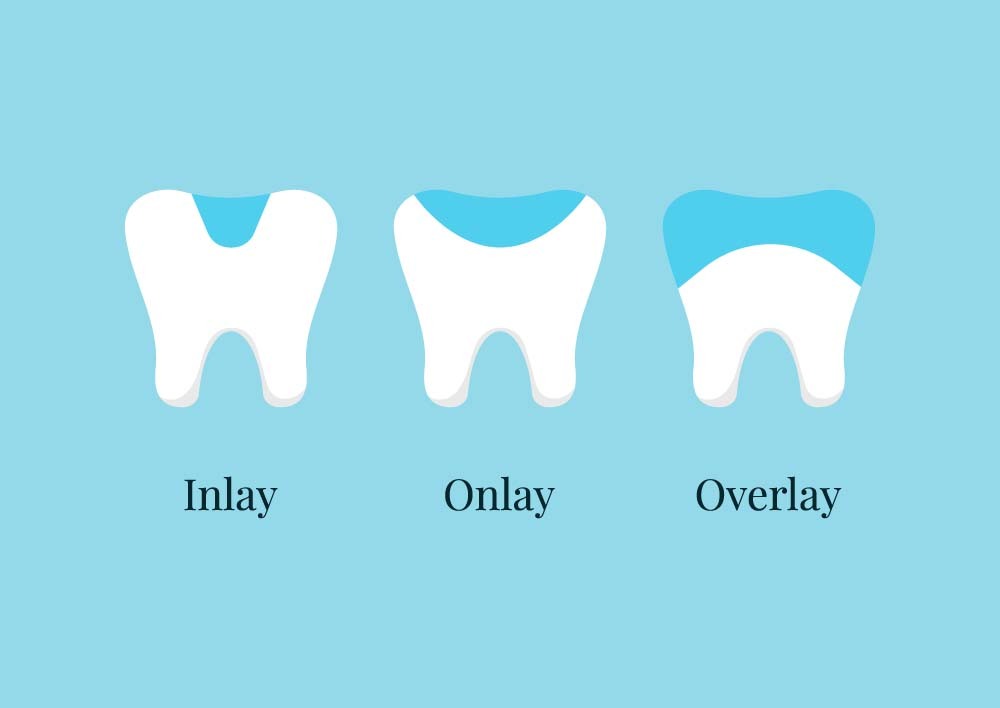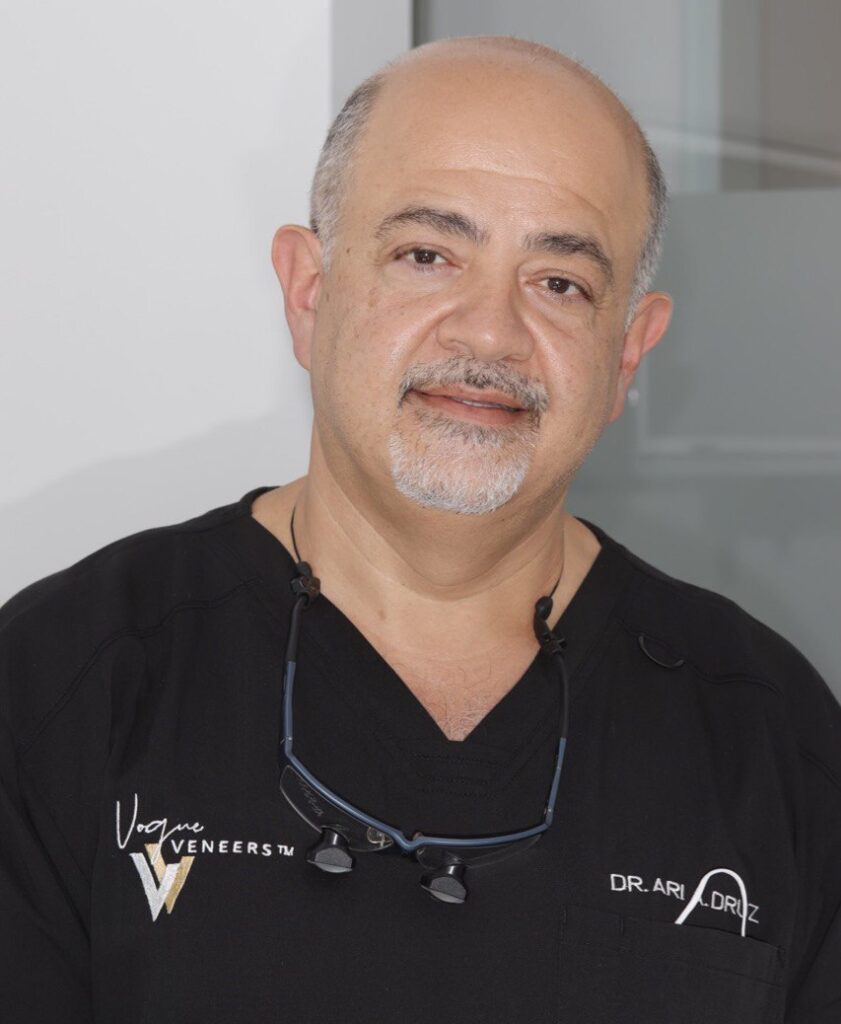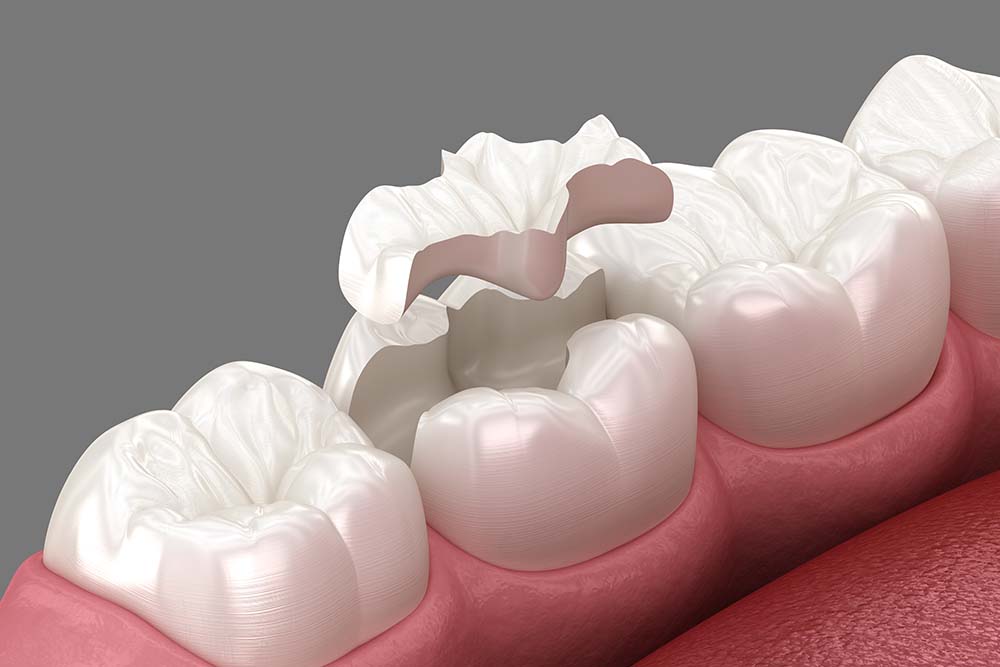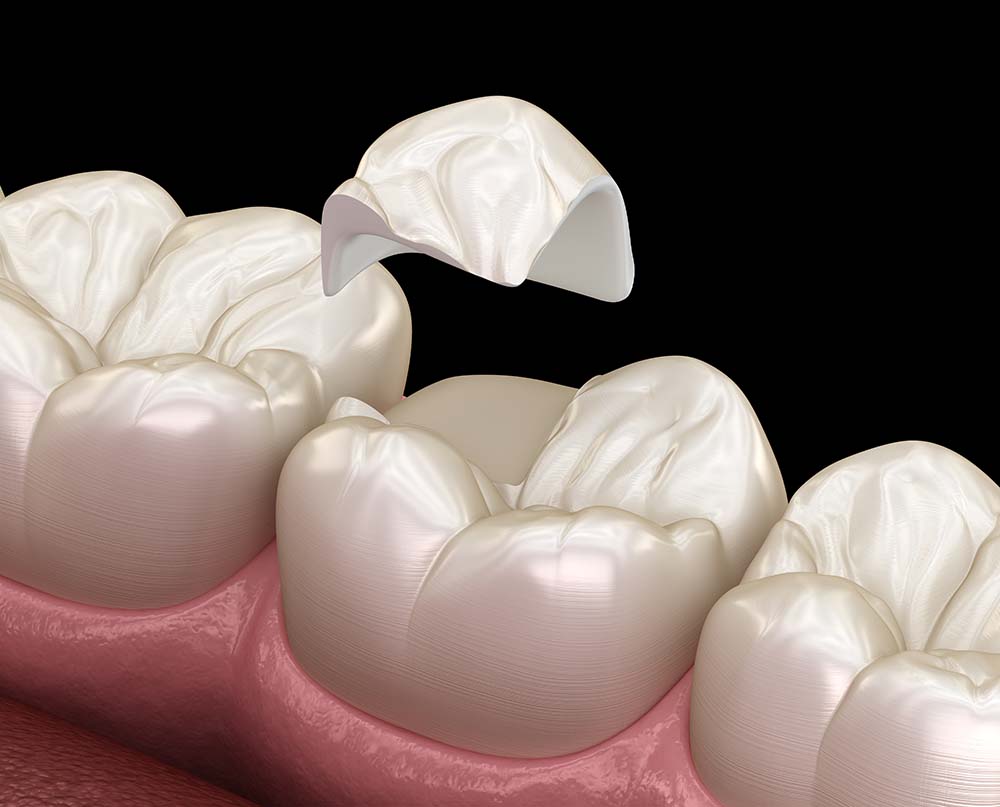Inlay, Onlay
Dental restoration of tooth cavities with premium-quality ceramic micro prostheses.
Reliable dental restoration with inlays and onlays in Miami.
Schedule an appointment at our clinic located in Sunny Isles Beach. We take on the most complex clinical cases — even when most other clinics refrain from trying to save the tooth/teeth and offer tooth extraction.. This service is part of the Smile Makeover – a set of procedures for restoring the cosmetic beauty and functionality of teeth.
Dental inlays and onlays are micro prosthetics.
They are placed on molars or premolars to restore teeth without using fillings, as well as enhancing their cosmetic appearance. They are used when there is significant damage to the chewing area of the tooth. The cavities are filled with ceramic inlays / onlays when the walls and root are intact.

Porcelain inlays, onlays recreate the natural contour (chewing cusps, fissures).
Tooth restoration near me? Premium inlay, onlay restorations – Dr. Tetri
Tetri’s Smile Dental Boutique – where quality exceeds your expectations.
- I maximize the preservation of living tooth tissues.
- I meticulously restore the tooth’s anatomy, avoiding nerve removal.
- I ensure perfect precision in the fit of the overlay/overlay (preventing decay).

We hold ourselves up to the highest standards of dental treatment and do not recommend restorations with fillings. Dental fillings have a lot of disadvantages: they shrink and have a short service life.
Reasons to choose Tetri’s Smile Dental Boutique:
- One of the few clinics in the US that offers gneuromuscular dentistry – restoring the proper position of the jaw so that the denture lasts as long as possible.
- One of the 3 clinics in Florida that uses PIC to create inlays. The accuracy of this technology is 7 microns – 10 times thinner than a hair!
- We carry modern high-precision equipment, such as a dental microscope for treating root canals.

Who is suitable for restoration of teeth with onlays / inlays?
Fill the entire area of the tooth
Porcelain inlays are recommended in cases of significant dentin destruction or extensive damage – where composite fillings cannot be placed. Onlays/inlays:
Resolve issues with chipping or repeated damage after a direct restoration
Aid in the restoration of the tooth structure – without restoration of fissures
Help create the correct occlusion
This is a small ceramic micro prosthesis. It is fixed in the center of the tooth or between the lateral walls after the preparation of the hard tissue.
- Indications: Dental inlays are installed after the treatment of deep caries.
- Treatment: The dentist removes the damaged dentin and fixes the inlay with dental cement.

his restoration covers the upper area of the tooth – the central, lateral, and chewing surfaces. A medium-sized micro prosthesis. In some cases, it can even replace the side wall.
- Indications: Significant tooth decay, chipped or cracked walls, as well as irregularities in the structure of the tooth.
- Treatment: The dentist removes the carious mass and the damaged tissue. Onlays are placed after root canal treatment.

Inlays vs. dental fillings
Porcelain inlays and onlays are used to restore deep cavities. They create a strong chewing surface that is more reliable than fillings. The result after treatment:
A tight fit. They don’t shrink and stay durable with proper care – composite fillings shrink up to 5% - hence a risk of cavities.
They imitate the color of enamel and look just like the adjacent units.
Restored anatomical structure, and better occlusion and contouring of the dental curve.
Inlays/onlays can be placed in minutes. The patient does not need to wait for the dentist to apply several layers of composite.
Onlays vs. crowns
The dentist will install an onlay so there is no need to grind down healthy tissue and walls to fit a crown. Porcelain onlays require less preparation and cover only the chewing part. Crowns are placed if the tooth is severely damaged – when the walls are destroyed.
Making an onlay is a very delicate dental procedure. Besides, quality root canal treatment is required before prosthetics. Dr. Tetri designs microprostheses using PIC individually for each client.
Stages of onlay / inlay placement
The dentist examines the oral cavity and collects the anamnesis – complaints, inflammation, destruction – during the consultation. Then they scan the mouth with a Morita 3D scanner to build a customized treatment plan.
The dentist removes the damaged tissue under local anesthesia. If the lesion is deep, they open access to the root canals for resealing.
A dental technician prepares a 3D model of the tooth using Exocad. Then they manufacture an inlay (onlay) on a CAD/CAM machine with minimum error.
The dentist adjusts the structure to the cavity, fixes it on the dental cement. They check the contact points with the antagonist tooth, grind and polish the inlay.

